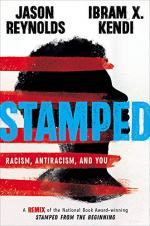|
This section contains 1,370 words (approx. 4 pages at 400 words per page) |

|
Summary
During the Enlightenment era in the new America, intellectuals like Thomas Jefferson and Benjamin Franklin began to further their thinking about life, work, and art, while the norms of slavery and racism stayed the same. On the occasion that a Black person was found to have skill in art, literature, or intellect, they were touted as an extraordinary anomaly and made to showcase their talent. Phillis Wheatley, for example, was a captive from Senegambia, until a family bought her as a "stand-in" for the daughter they lost (44). She was homeschooled, learned to read, and by her early teens was compiling a book of poems she had written. Despite her obvious talent, American publishers refused to publish her, as "poetry was for and by rich White people" (45). Wheatley's talent gave rise to a new idea that "Black people weren't born savages but instead were...
(read more from the Section 2: 1743-1826 Summary)
|
This section contains 1,370 words (approx. 4 pages at 400 words per page) |

|




